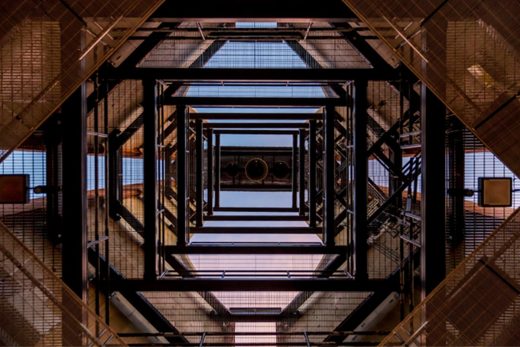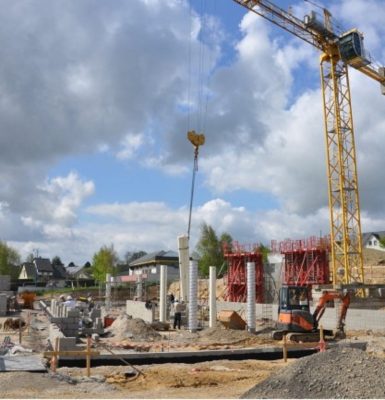Emerging software solutions in construction, Building industry output, United Kingdom housebuilding guide, PMI
Emerging Software Solutions in Construction
22 May 2024
Emerging software solutions, particularly those powered by AI, are transforming complex building projects from concept to completion. Advanced software streamlines various aspects of construction, from design and planning to on-site execution, enhancing efficiency and precision while significantly reducing costs and timeframes.
Software solutions in the construction industry are rapidly evolving, allowing for greater collaboration and data accessibility. Cloud-based platforms enable real-time updates and communication among teams, regardless of their physical location.
Additionally, AI enhances decision-making with predictive analytics and machine learning algorithms, providing you with the insights needed to anticipate and mitigate potential project risks.
Effective integration of technology in construction also leads to better safety protocols and reduced manual errors. For instance, HVAC estimate software has become indispensable in creating accurate estimates that account for unpredictable labor and material demands, thereby saving time and money.
Innovative Technologies Shaping Construction
Artificial Intelligence (AI) and Machine Learning (ML) are at the forefront of reshaping how you approach construction projects. AI-driven analytics enable predictive maintenance, reducing downtime and saving costs.
Machine learning algorithms optimize resource allocation and can predict project outcomes, making your operations more efficient.
The Internet of Things (IoT) and Data Analytics
The integration of IoT devices in construction presents real-time data capture on the worksite, enhancing your decision-making through comprehensive data analytics. This connectivity helps in monitoring construction sites for safety compliance and operational workflow, ensuring your project’s productivity is kept at optimum levels.
BIM and Digital Twins
Building Information Modeling (BIM) is a digital representation of your construction project’s physical and functional characteristics. BIM facilitates better collaboration among stakeholders, while Digital Twins offers a virtual model that serves as a real-time replica of the physical building, allowing for simulations to guide future development and management.
AR and VR in Construction
Augmented Reality (AR) and Virtual Reality (VR) technologies are becoming increasingly prevalent in conveying complex construction designs and plans. They enable you to conduct immersive walkthroughs and identify potential issues before physical work begins. This transformation not only elevates efficacy in planning but also enhances training and safety protocols onsite.
These subdivisions of emerging construction technology wave a path to a digitally transformed industry catering to the needs of developers and stakeholders for innovative solutions and better-equipped construction management.
Project Management and Communication Advancements
Technological advancements have led to the development of sophisticated platforms and tools that cater specifically to the intricate needs of construction projects.
Collaboration Platforms
The cornerstone of modern construction management is digital collaboration. Construction companies and teams utilize collaboration platforms to streamline the project life cycle, facilitating a centralized hub for document management, field productivity, and prefabrication planning.
For instance, comprehensive construction management software has become an indispensable tool for those aiming to align project goals and enhance transparency across all stages of construction.
Notable features include:
- Centralized document control
- Integration with prefabrication processes
- Transparent task assignments and updates
These software solutions aren’t necessarily the domain of big businesses that undertake large construction projects — even if you’re a small, local business that employs contractors, adopting a software solution like all-in-one roofing software goes a long way in enhancing communication with clients, optimizing resource use, and streamlining collaboration.
Real-Time Communication and Data Sharing
Immediate access to information is a critical factor in maintaining project momentum and efficiency. Today’s construction projects benefit from real-time communication and data-sharing technologies that keep all stakeholders informed. This direct line of communication supports quick decision-making, mitigating delays and misunderstandings.
Real-time features include:
- Project updates accessible from any location
- Instant data exchange between the office and field
- Live chat for immediate problem-solving
Tools and platforms functioning on these principles promote a healthy flow of information, ensuring that facility management and onsite productivity are never compromised. For achieving streamlined project management, acquainting yourself with powerful software options becomes a strategic move.
Incorporating these technologies fosters transparency and connectivity, driving construction projects toward successful completion while keeping you at the forefront of industry trends.
Revolutionizing Construction Productivity and Efficiency
With advancements in technology, the construction industry is undergoing a dramatic transformation, focusing on increasing productivity and efficiency. You will see how incorporating innovations such as drones and robotics, adopting prefabrication and modularization techniques, and utilizing advanced materials and 3D printing are setting new standards in the field.
Drones and Robotics
Drones are now a game-changer in the construction industry; they provide aerial surveys that are faster and more accurate than traditional methods. Robotics, on the other hand, offers automation in repetitive and labor-intensive tasks, leading to a significant impact on architecture and design. This blend of technology enhances safety, reduces human error, and streamlines the overall construction process.
Prefabrication and Modularization
Prefabrication and modular construction techniques have been pivotal in shortening construction timelines and reducing waste.
By assembling components in a controlled environment, you optimize resource utilization, improve work efficiency, and significantly cut down on-site construction time. The systematic approach to designing and building brings about an evolution in construction productivity.
Advanced Materials and 3D Printing
Innovative building materials and the advent of 3D printing have introduced unprecedented capabilities in construction. Advanced materials contribute to the durability and sustainability of structures, while 3D printing technology allows for complex components to be created with precision and speed, which facilitates a more efficient construction process.
Sustainability and Safety in Construction
Sustainability is at the forefront of modern construction practices. You have efficient digital tools at your disposal that can lead to more sustainable building designs and processes. For instance, the use of digital technologies for construction sustainability promotes the identification of environmentally friendly solutions. Techniques like paperless operations and digitized workflows are critical to your sustainability goals by minimizing waste. These processes utilize:
- Cloud-based technologies: Streamline project management and increase resource efficiency.
- Big Data analytics: Optimize materials usage and reduce the carbon footprint.
Key areas where you should apply these technologies include resource management, energy efficiency, and waste reduction.
Enhancing Safety through Technology
Your commitment to worker safety is paramount, and utilizing construction technology is pivotal in achieving safer work environments. The integration of sensors and advanced inspection tools helps you maintain rigorous safety standards. For example:
- Wearable Technology: Monitors vital signs and detects hazardous conditions.
- Drones: Conduct high-risk inspections without endangering workers.
These technologies also increase transparency in your construction projects, allowing for real-time monitoring and prompt response to potential safety hazards. By incorporating these innovative solutions, you safeguard the well-being of your workforce and significantly improve the efficiency of your construction operations.
 Photo by Dayne Topkin on Unsplash
Photo by Dayne Topkin on Unsplash
Modern Project Management Tools Conclusion
By providing tools for better project management and increasing operational efficiency, these innovations are modernizing an industry historically slow to embrace technological change. Software now plays a pivotal role in enhancing various construction phases, from initial design through to project delivery.
Leveraging technology such as smart construction platforms, data analytics, and automation, could catalyze productivity and profitability for your firm. Your proactive approach to integrating technology will position you at the forefront of the construction industry’s exciting future.
Comments on this Emerging software solutions in construction article are welcome
UK Construction News
New UK Housing: British Housebuilding
New UK Housing
UK Construction Industry recovery news
UK Construction Industry recovery
UK asbestos removal from buildings within 40 years
UK asbestos removal from buildings
New Construction Output Increase Comment

image courtesy of article provider
UK Construction Industry recovery news
How will Construction Industry respond to Brexit?

How will Construction Industry respond to Brexit?
Brexit Impact on UK Construction Industry News
Brexit Impact on UK Construction Industry
COVID-19 Crisis Impact on Buildings
COVID-19 and reinvention of the construction industry Report News
COVID-19 construction industry reinvention
How the coronavirus will affect urban design
How COVID-19 changes urban design
Construction Industry leveraging Big Data for Gains
Comments / photos for the Emerging Software Solutions in Construction page welcome






